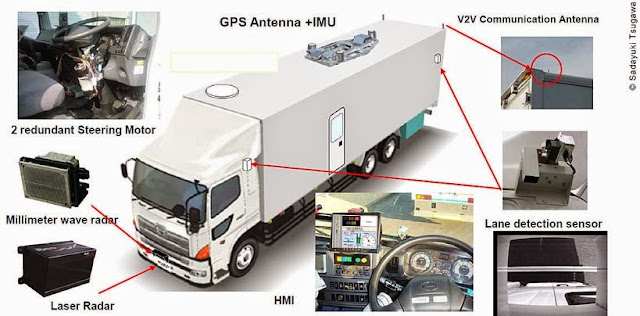As
reported by Tech Republic:
Between the buzz over self-driving cars at CES 2016 and the Obama administration's announcement to invest almost $4 billion in autonomous vehicle research over the next 10 years, the race to create the best self-driving car has never been hotter.

And, the rise of self-driving cars is going to have a major impact on businesses and professionals. Automated vehicles could replace corporate fleets for deliveries or transporting employees, for example. And workers could gain productive hours in the day by working instead of driving during daily commutes. It is also poised to completely change the car insurance industry by reducing accidents—a new
report predicts that accidents will drop by 80% by 2040.
But, what does "autonomous driving" really mean? In 2013, the US Department of Transportation's National Highway Traffic Safety Administration (NHTSA) defined five different levels of autonomous driving. And on
January 15, the NHTSA updated their
policy to reflect that "the widespread deployment of fully-autonomous vehicles is now feasible," According to the document, the NHTSA will provide "best-practice guidance to industry on establishing principles of safe operation for fully-autonomous vehicles"—in other words, vehicles at level 4—in the next six months.

The NHTSA is "working to transform government for the 21st century, harnessing innovation and technology that will improve people's lives," according to a representative. "This is an area of rapid change, which requires the DOT and NHTSA to remain flexible and adaptable as new information and technologies emerge. Amid that rapid change, the North Star for DOT and NHTSA remains safety."
Here's what you need to know about levels 0-5.
Level 0: This one is pretty basic. The driver (human) controls it all: steering, brakes, throttle, power. It's what you've been doing all along.
Level 1: This semi-autonomous level means that most functions are still controlled by a driver, but some (like braking) can be done automatically by the car.
Level 2: In level 2, at least 2 functions are automated, like cruise control and lane-centering. It means that the "driver is disengaged from physically operating the vehicle by having his or her hands off the steering wheel AND foot off pedal at the same time." The driver must be still always be ready to take control of the vehicle, however. So, level 2 means two functions automated. Easy to remember, right?
Level 3: Drivers are still necessary in level 3 cars, but are able to completely shift "safety-critical functions" to the vehicle, under certain traffic or environmental conditions. It means that the driver is still present, but is not required to monitor the situation in the same way it does for previous levels. Jim McBride, autonomous vehicles expert at Ford, said, "the biggest demarcation is between Levels 3 and 4." He's focused on getting Ford straight to Level 4, since Level 3, which involves transferring control from car to human, can often pose difficulties. "We're not going to ask the driver to instantaneously intervene—that's not a fair proposition."
Level 4: This is what is meant by "fully autonomous." According to the DOT, level 4 vehicles are "designed to perform all safety-critical driving functions and monitor roadway conditions for an entire trip." It's what Tesla says will be
available by 2018.
*Level 5: It should be noted that some organizations, like the Society of Automotive Engineers (SAE), have their own
charts that refer to "Level 5" vehicles. This refers to a fully-autonomous vehicle that does not have any option for human driving—no steering wheel or controls.

Why it matters
So why are the levels important? They serve as general guidelines for how technologically advanced a vehicle is. In terms of what consumers need to know, Thilo Koslowski, Vice President and Lead Automotive Analyst at Gartner Inc., thinks that ultimately, there are three stages that will be relevant: "automated, autonomous, and driverless." It's important to distinguish between "autonomous" and "driverless," he said: "driverless is a more advanced stage of autonomous."
But while drivers themselves may be less concerned with the distinctions, they could be significant when it comes to issues like car insurance, which is expected to change radically in the era of self-driving cars.
KPMG, a consulting firm, has issued a
report on how the car insurance business will be affected, since the number of accidents are predicted to go down 80% by 2040. The different levels are important because they "change the risk profile of the car," according to KPMG expert Jerry Albright. "Insurance companies need to understand how these new capabilities affect driving risk." Joe Schneider, also with KPMG, put it this way: "It's like a baby, going from crawling to walking to running."
Albright said, "The car becomes safer and safer as it moves towards fully-autonomous driving."



/cdn0.vox-cdn.com/uploads/chorus_asset/file/6390477/Charge_to_supply_electric_trucks_for_the_FIA_Formula_E_Championship.0.jpg)
















